
|

|
|
Home Site Search Contact Us Subscribe
|
|
|
One-on-One: Putting Colors Together: An Interview with Will Alsop For Alsop, it is the act of painting, the state of losing control - its imprecision and intuitiveness - that best define his initial vague intentions - and what ultimately brings him close to the mystery of inventing new architecture. By Vladimir Belogolovsky November 30, 2010 Color plays a significant role in perceiving architecture as a whole. The effect that buildings produce on us results from the interaction of all of the senses, and the influence of color cannot be considered a mere decorative addition to an architectural work. It was Theo Van Doesburg, the Dutch painter and one of the inventors of neoplasticism, who said: “Color makes visible the spatial effect towards which architecture tends...Color is an expressive material equivalent to other materials like stone, iron, or glass.” One of the most vivid contemporary champions of the use of bold colors in architecture is British architect and artist Will Alsop. He recently invited me to his London studio, where we talked about the role of color in his work.
Alsop is guided by the principle that architecture is both a vehicle and symbol of social change and renewal. He is constantly questioning the norm and is critical of any preconceptions, hard structured theories, and rules. He tries to remain free and open, relying on his creative imagination, which unlocks fully when he engages in his favorite activity – painting.
A canvas at least 10 meters long is stretched on a wall in his design studio. His new ideas first appear as large scale paintings. They are further developed, discussed, refined, and, eventually, scanned into computers to be shaped into fantastic projects to be built all over the world. Traces of paint splashes and dribbles are everywhere. There is also a painting studio next to the office, and another one in Sheringham, Norfolk, where his in-laws live. Every summer, the architect spends time with his friend, the sculptor and painter Bruce McLean, at his Malagarba studio garden in Minorca, Spain, painting large-scale, spontaneous collages that often incorporate found objects.
The night before our meeting, the architect’s new book Will Alsop: The Noise was launched at large art/performance gallery directly below his office in Battersea, on the south bank of the River Thames opposite Chelsea. The title of the book refers to the state of mind of the architect formed by his studies and explorations before his creative imagination is released and ideas spontaneously begin to flow. Author, Tom Porter, a color consultant who has published numerous books on the subject including Colour for Architecture Today, talked at great length with Alsop about his architecture-making process, then produced an artistic psychoanalysis of him.
“I don’t really have any process,” Alsop responded to my question about his creative approach. “I don’t like having a process. I try to be as neutral as possible in the beginning of every project to start, with no specific idea. And sometimes, I finish with no idea,” he said, laughing.
Vladimir Belogolovsky: Where did your fascination with bold colors come from? How did it start?
Will Alsop: Well, that’s always a good question, isn’t it? How did it start? In a way, it was always there. I studied art before I studied architecture, and I used to teach art and sculpture. Sculpture doesn’t really have much to do with color, but it can. So I was always interested in both art and architecture. For a long time for me, these were different activities. But gradually, I understood that it is all the same. There is no difference at all. I don’t make any real distinction between paintings and thinking. You asked me about significance of color in my work in its own right. Well, the older I get the more clear it is to me – you either use color or you don’t. Some people use very little color, and others use it a lot.
VB: But you typically use a lot of color.
WA: It is not always true. In the last few years, I used black and white in my paintings. I don’t think in my case there is any particular science or rationale in choosing any specific colors. What interests me most is putting colors together. It can be right, and it can be wrong. I am interested in colors themselves. In architecture, the context is very important. Take, for example, my Peckham Library in South London. If you look around it, there is no color in those buildings – not bright ones. But if you look around nature, there are lots of colors. A field of poppies or the beautiful colors of tree leaves in the fall. These colors are spectacular! You almost need sunglasses. But people fear colors in the built environment. I wonder why? In London as in Moscow, there are a lot of grey days, and the fabric of the city doesn’t help. I don’t quite understand why anyone would not want to have colors in such cities. Here in London, on a grey day, why would I want to look at a grey building? As you know, Moscow is located in the wrong place. Its climate is cold. It has no sea and little sun. That’s why, before the revolution, there used to be lots of colors there&hellip gold, red. But after the revolution, it really became a grey city. What is it about socialism and the Russians resulting in avoidance of color?
VB: It may have to do more with climate than ideology.
WA: It is interesting that the warmer the country, the brighter its colors. In Mexico or the Caribbean, the colors are very bright. There is no rational explanation for that. Logically, it should be the other way around. There should be lots of color where there is no sun and less where there is a lot of sun. These are just questions and observations. But I noticed that people who are in control of aesthetics in various places around the world worry about bright colors. Every time I make a new proposal, I have to defend my use of them. But look at nature. God gave us so many colors!
VB: You mentioned that you used to teach sculpture. Was this in any way related to your ideas of using colors?
WA: No. I used to teach sculpture [at Central St. Martins College of Art & Design, London]. I would tell my students, “We are here to make sculptures, but if it turns out to be art in any other form, it is fine. If not, it is also fine.” What I did was take away the rules. Because these kids – 20-, 22-year-olds – once they know they are in the sculpture department, they think, “Oh, I need to make a sculpture.” But I don’t think so. You must have a good reason to make a sculpture. It all depends on your observations. Sometimes, a sculpture is not appropriate. And sometimes, a building is not appropriate. I never really push for the use of colors.
VB: Do colors play a specific role in your work?
WA: On one level, it cheers people up. There is nothing in architecture books that says it cannot be fun. I think color has a very direct effect on the way we behave and the way we feel. Colored glass casts colorful shadows. If there was no color in my buildings, it would be a completely different experience. Architectural critics think that fun and architecture don’t go together. But I always ask, why not? Where in the rule books does it say these things don’t go together? The fun aspect of architecture is a very serious part of it. There is no right way to make architecture, and I think that is good. Our cities should have diversity. Uniformity makes life less interesting. There is a lot of that around Moscow or in the north of England. It bores people. Architecture is not about just having a roof over your head, but about a feeling of belonging and feeling comfortable. Sometimes, it is very difficult to explain how to do that, but I have had people tell me that my buildings are very comfortable. They would come to me and ask, “How do you do that?” I don’t know, and I don’t want to know, because if I did, all the fun and exploration about making architecture would be destroyed.
VB: Do you ever use certain colors to emphasize a particular meaning or to express a particular idea?
WA: Not really. When I design my projects, I don’t think about that. Some people ask me, “What does this or that have to do with the context?” I suppose...nothing.
VB: Nothing?
WA: Nothing.
VB: Is that OK?
WA: I think that’s fine, because, for example, in the case of Peckham Library, there are no significant buildings around there. So what do I have to relate to? I always find contextualism a very strange subject.
VB: But when I talked to you about Peckham Library two years ago, you said that the context had a very significant role in designing that building. For example, you lifted the building up so that St. Paul’s Cathedral would look quite close, and the people at Peckham would suddenly realize that they are not lost in that huge part of South London, but that they are in the middle of London, right?
WA: Yes, and lifting the building also provided a place for various events and important view corridors. Views are very important in architecture. In fact, my next book is going to be called The View. But that has nothing to do with color.
VB: The way you use materials has a lot to do with color, right?
WA: Yes, new materials enable me to use colors in new ways. For example, the green on Peckham Library is oxidized copper. I am now working on a project near Barcelona where I am using wood, and it is available in many colors. Working with various materials makes you think of colors.
VB: You once said: “Painting has helped me rediscover what architecture is and what it is not.” How does painting help you to discover what architecture is?
WA: I work on a very big scale, and when I paint, I try many things; it may look like I am in control, but I am not. I discover things as I go. A painter has a mind of his own. I paint, I sit, I look, and my paintings often suggest what the next step is going to be. I never know for sure. I move from initial paintings that are very abstract and suggestive to paintings that are more specific. I don’t know if my work can be called art. Some people like it. Some people don’t like it. It doesn’t matter. In more recent years, I began doing art for its own sake. The process of painting takes me away from myself. There are different ways for achieving that. Some people fiddle with pieces of paper; others play with small study models. In my case, it happens to be painting. What I don’t like to do is to think my way into a solution. The idea of waiting for inspiration doesn’t work. I need to try many things before I know what I want. And, again, I try to work on a big scale. To me, it is illogical to fit on a small piece of paper ideas of what the huge thing is going to be like.
VB: Do you allow other people to participate in your painting and design process, or is this very personal for you?
WA: Sometimes, my work becomes eclectic, and a painting might become a collective work with different people reflecting on our discussions and ideas. In the very beginning, it is usually just me, and then other people in the studio might contribute.
VB: Contribute with words and comments or by adding bold colors to your canvas?
WA: Sure, they paint over my work. That’s fine.
VB: Do you ever depict context in your paintings?
WA: There is nothing more frightening than an empty canvas, so I like to put something there that has no meaning at all – just something to work with. I also have a studio in the country where I work on large pieces of paper. As I am working on one piece of paper, I have another piece on the floor. The things that drop – paint, charcoal, dust – start the next painting. This takes away my fear of the empty white page. Sometimes, I stand on a piece of paper. One of the reasons for painting is that you are not really in control of what you are doing, and that interests me a lot.
VB: Do you try to achieve a sense of beauty in your paintings and buildings?
WA: No, I don’t. I like the word “beauty,” and I use it a lot. But if you said to me, “I want you to do a building, and I want it to be beautiful,” that would be really hard. Because beauty is a fact, and it can change with time. Something ugly in the morning can become beautiful in the evening. Beauty is not a healthy consideration, but rather a classification afterwards. The job of the architect is to ask the question: “Is this beautiful?”
VB: Hopefully, this question is asked before the project is finished.
WA: Architecture is a slow process, so there are many opportunities for an architect to ask this question. What is important to remember is that architecture is not a translation of anything. Architecture must not follow theories, style, fashion, or technology. It exists as an entity within itself. Reason has destroyed much beauty.
VB: You said that there are too many bad architects and bad clients. What kind of architects and clients would you describe as good ones?
WA: The ones who are serious and open-minded. I like architects who always defy people’s expectations. It doesn’t mean I like what they do, but when their work is done, it will have presence, and it will be a strong part of the fabric of what the city could be. For example, I like Jean Nouvel’s work because I don’t know what he is going to do next. But if you show me a site where Zaha Hadid is going to build, I can try to predict how that building is going to look and, chances are, my prediction will be 70% accurate – there is no surprise there. So what I am really saying is that I don’t like styles. As far as the clients, they should be engaged in the process. I just finished a school in London where I worked a lot with children. They were my clients. I went to meet them and said, “We are going to build a new building. What is important for you?” Then we would talk, we would draw, and that became the beginning of the project. This is very important. I go through this process during each of my projects.
VB: You won the Peckham Library commission based on an interview that hints that an idea was more important for the client than an image. What usually drives your projects – an idea or an image?
WA: At that particular interview, I had no idea. I talked about the process. For me, it was important to ask the question, “What is a library?” I wanted to talk to a lot of different groups of people and let this new thing emerge based on my discoveries. That’s exactly what we did. The idea of having no idea worked. A similar interview process was when I competed for Ontario College of Art and Design in Toronto. But there, the brief was very detailed. I read it on the plane on the way to my interview. It was really boring. Every room was prescribed, and all functions were listed in minute detail. So I came for my interview and told those people that I read the brief, and I can’t figure out how you know this is right and that this is what you really want. There were 16 or 17 people, and I said to them, “Put your hand up if you really believe in this brief.” Only one person raised his hand. He was the guy who wrote it. So I said, “Hmm...so you don’t really believe in this brief?” At that point, I tore it up right in front of them and said, “Well, if you give me the job, here is what I would like to do – I want to work with the students, the neighborhood, and the staff, and we’ll figure out what you want.”
VB: What you describe seems to be a very democratic process, yet you said: “Democracy and architecture do not go together.” Why is that?
WA: Probably when I said that, I was thinking about Holland. I like the idea of opening up the question and engaging people in working together on coming up with solutions. Discovery for me is more important than design. But in Holland, this process never stops. Everybody has an opinion, and everybody wants to make a decision. But in the end, I am the architect, and I need to make the decision.
VB: You said: “The act of teaching must be a selfish act. I can explore teaching as an element of my own architectural exploration.” What kind of assignments do you give to your students?
WA: As I get older, I give fewer and fewer assignments to my students. I ask them, “What is it that you want to do?” I don’t try to ask them for a particular project to be submitted by such date and such time.
VB: You don’t give them that much freedom, do you?
WA: I do. I could say to them that this semester, we are doing such and such building, let’s consider these many conditions and so on. But I want them to think about what is important to them. This way, it is much more interesting to me. I learn from them, too, and that’s why I call it a “selfish act.” When I teach, I like sitting with students around a big table as they are talking about their work in front of everyone else. That way, I think they learn a lot more from each other as well as from me. For me, it is a lot more work – I have to learn about 10 or 12 different projects – but it is more interesting.
VB: You said: “The problem of architecture is that architects think they have a responsibility to society and not to themselves. The architects must be selfish. Once this lesson is learned the architecture can begin.” Could you please elaborate?
WA: I think this is true. Clearly, we architects have responsibilities. Most architects from around the world practice architecture with the best intentions to serve their society. Usually, the names of these architects are forgotten. But seriously, at least half of any architect’s responsibility is to figure out who you are, because you didn’t become an architect just to assemble different things. You didn’t, or at the least, I hope you didn’t. Because you have an attitude, a view, and you have a sense of judgment. That’s what you are trained to do, and that’s what you have become. Therefore, the process of architecture-making is an act of selfishness. I like getting involved in various discussions, but, in the end, architecture must give me pleasure. It might give other people pleasure, as well. I don’t know how it happens, but I know that many people like my buildings and enjoy being in them. I know, because many people have shared this with me. Architecture is the art of compromise, and therefore, the basis of the compromise must be strong. It can only be strong if you have the freedom to dream and not to conform to society’s dreams.
VB: I must say that I have visited many of your buildings in London on my previous visits, and I could never have anticipated that I would enjoy being in them so much. Judging from photographs alone, I could never have predicted that, because I prefer restraint over excess. But personal experience defies all kinds of preconceptions, including my own. Nevertheless, I have never heard that to make good architecture one must be a selfish architect. Do you think this is really true?
WA: Thank you. Well, I don’t want to generalize, but I would say yes. Of course, purely selfish people are horrible, but you need to be selfish in terms of forming the work and making critical decisions. You can open up things to a debate, and you can enjoy it and learn from it, but there comes a point when it is you, the architect, who must make a decision. That’s the art of architecture – putting everything together in your own way.
Postscript:
After my conversation with Alsop, I thought about his fascination with putting colors together. It seems that this way of working is really not so much about the colors per se as it is about the idea that the process of architecture-making involves putting together many aspects: dreams, memories, inspirations, impressions, and so on. It is in mixing paint colors, however, that Alsop first recognized his ability to see the embryonic potential of architecture. This potential is visible to him more vividly in this way than in any other medium or form of generating ideas. For Alsop, it is the act of painting, the state of losing control – its imprecision and intuitiveness – that best define his initial vague intentions. This is what ultimately brings him close to the mystery of inventing new architecture. Is there a lesson in this for the rest of us? Yes, as long as we keep searching for our own creative paths.
Will Alsop, one of the UK’s most prominent architects, was born in 1947 in Northampton, and studied at London's Architectural Association in the late 1960s. He is a prolific artist whose expressionist paintings and sketches have been exhibited alongside his architectural projects in galleries and museums. He is a Royal Academician and a fellow of the Royal Society of Arts. Currently, he is a professor at the Technical University of Vienna.
Beginning in 1981, Alsop worked in partnerships – first with his classmate John Lyall, then with German architect Jan Störmer. In 2000, he formed Alsop Architects. In 2006, he sold his office to the British design conglomerate SMC Group. SMC Alsop remained fully independent, with offices in London, Beijing, Shanghai, Singapore, and Toronto. In 2009, Alsop joined RMJM as design principal in London where he retains his independence as Will Alsop at RMJM and continues to lead his projects around the world.
The architect is well known for a diverse range of projects, including: the regional government complex Hôtel du Départment, Marseilles; the Sharp Centre for Design at the Ontario College of Art & Design, Toronto; and the Peckham Library in South London, which won the coveted Stirling Prize in 2000. Recently completed projects include Chips, a mixed-use complex in Manchester (2009); The Blizard Building at Queen Mary University in London (2005); The Public, an arts center in West Bromwich, UK (2008); and the master plan for a mixed-use International Cruise Terminal in Shanghai (2010). From 1993 to 2000, Alsop maintained a Moscow office. This resulted in many adventurous proposals, including Millennium House, built in Moscow in 1999 in collaboration with architect Alexander Skokan.
Vladimir Belogolovsky, founder of the New York City-based Intercontinental Curatorial Project Inc., organizes, curates, and designs architectural exhibitions worldwide. Trained as an architect at Cooper Union, he has published more than 100 articles in American, European, and Russian publications, and is the American correspondent for the Russian architectural journals Architecturny Vestnik, SPEECH, and TATLIN. He has authored several books, including Felix Novikov for the series Masters of Soviet Architecture, and GreenHouse on leading sustainable projects. His book Soviet Modernism: 1955-1985, written with architect Felix Novikov, was released in October 2010. He can be reached at vbelogolovsky@gmail.com.
Also by Vladimir Belogolovsky
The
Art of Ennobling Communities: Interview with Sara Caples and Everardo Jefferson
One
on One: Elusive Architecture: Interview with Kengo Kuma
|
(click on pictures to enlarge)  Roderick Coyne Headingley Cricket Club Carnegie Pavilion, Leeds, UK (2010), by Will Alsop for Alsop Architects, part of the Archial Group 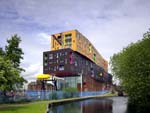 Christian Richters CHIPS, New Islington, Manchester, UK (2009), by Will Alsop for Alsop Architects, part of the Archial Group 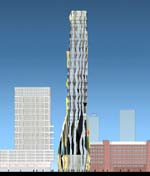 Alsop Architects City Road Tower, London (2007, unbuilt), by Will Alsop for Alsop Architects, part of the Archial Group  Alsop Architects City Road Tower, London (2007, unbuilt), by Will Alsop for Alsop Architects, part of the Archial Group 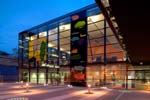 Roderick Coyne The Blizard Building, Queen Mary University, London, UK (2006), by Will Alsop for Alsop Architects, part of the Archial Group 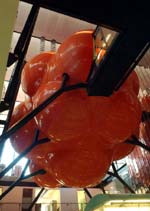 Roderick Coyne The Blizard Building, Queen Mary University, London, UK (2006), by Will Alsop for Alsop Architects, part of the Archial Group  Roderick Coyne The Blizard Building, Queen Mary University, London, UK (2006), by Will Alsop for Alsop Architects, part of the Archial Group  Roderick Coyne The Blizard Building, Queen Mary University, London, UK (2006), by Will Alsop for Alsop Architects, part of the Archial Group 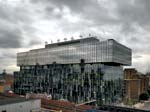 Christian Richters Palestra, London (2006), by Will Alsop for Alsop Architects, part of the Archial Group 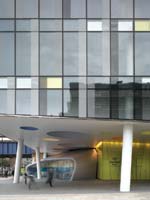 Christian Richters Palestra, London (2006), by Will Alsop for Alsop Architects, part of the Archial Group 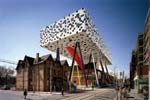 Richard Johnson Sharp Centre for Design, Ontario College of Art & Design, Toronto (2004), by Will Alsop for Alsop Architects, part of the Archial Group 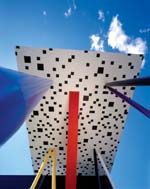 Richard Johnson Sharp Centre for Design, Ontario College of Art & Design, Toronto (2004), by Will Alsop for Alsop Architects, part of the Archial Group 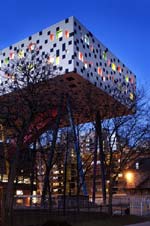 Richard Johnson Sharp Centre for Design, Ontario College of Art & Design, Toronto (2004), by Will Alsop for Alsop Architects, part of the Archial Group  Alsop Architects Colorium, Dusseldorf, Germany (2001), by Will Alsop for Alsop Architects, part of the Archial Group 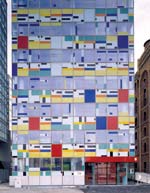 Alsop Architects Colorium, Dusseldorf, Germany (2001), by Will Alsop for Alsop Architects, part of the Archial Group 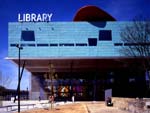 Alsop Architects Peckham Library, London (2000), by Will Alsop for Alsop Architects, part of the Archial Group  Alsop Architects Peckham Library, London (2000), by Will Alsop for Alsop Architects, part of the Archial Group  Alsop Architects The Hôtel du Départment des Bouches-du-Rhône, Marseilles, France (1994), by Will Alsop for Alsop Architects, part of the Archial Group 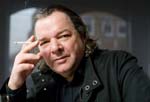 Antonio Olmos Will Alsop |
© 2010 ArchNewsNow.com